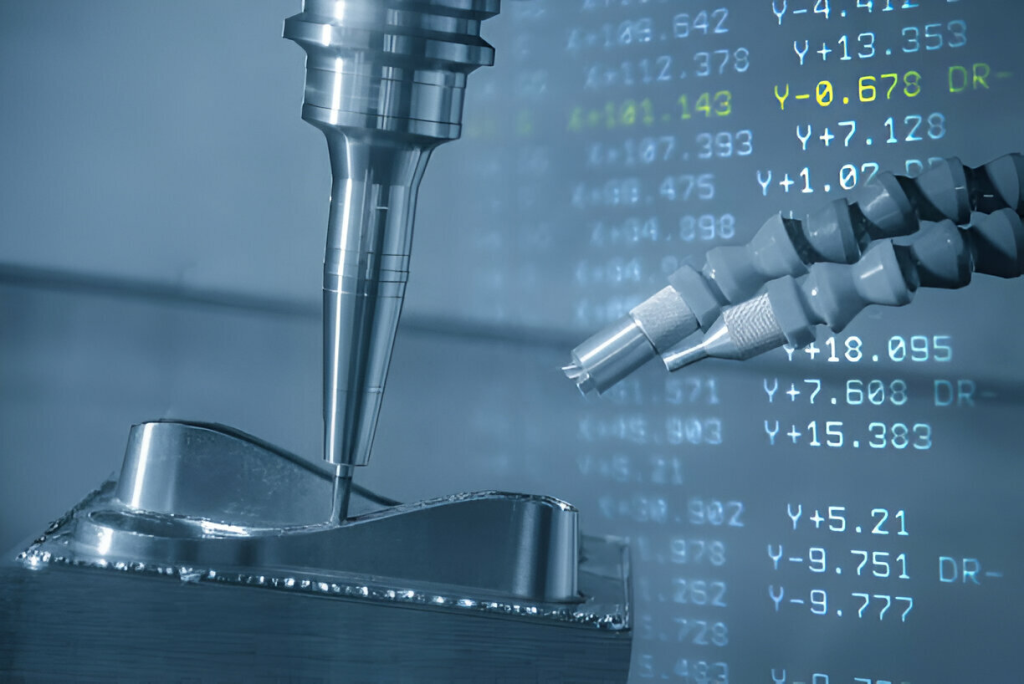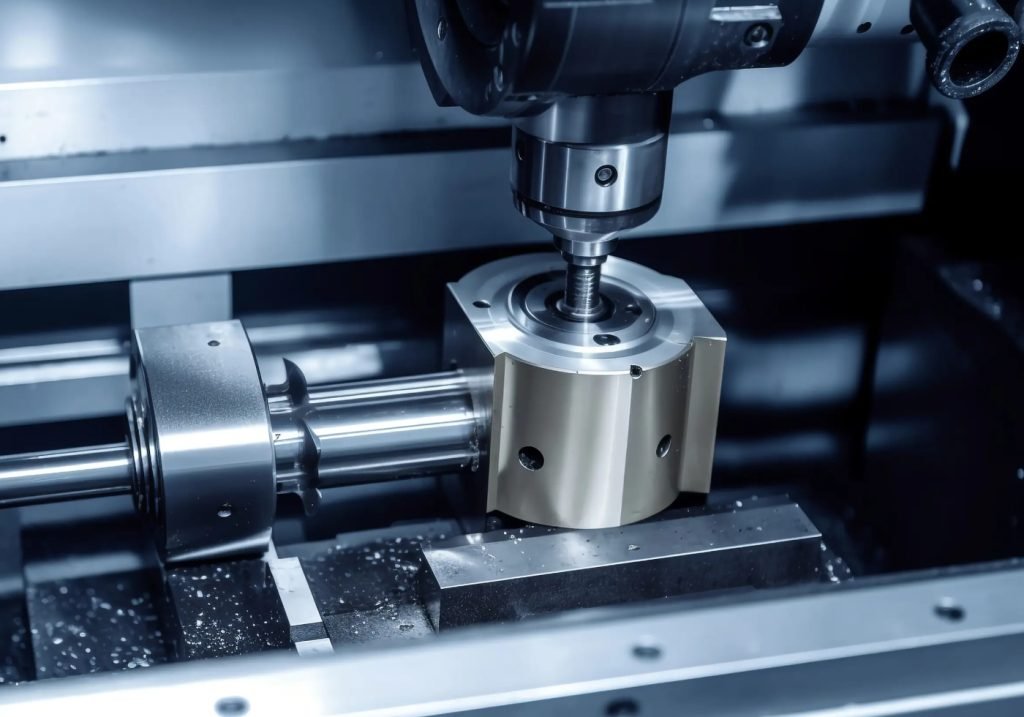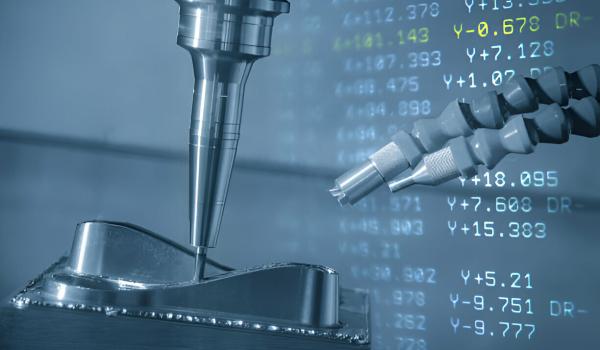For all CNC machines to work properly, they need G Code.
This numerical language is the basis of CNC operations. It tells machines how to do very specific jobs accurately.
There are a lot of things you can do once you learn how to make G Code for your projects. It’s not as hard as it might look at first.
But what is G Code, and why is it so important for CNC machining?
In this guide, we’ll go over the basics of G Code, talk about its different uses, and stress how important it is in the CNC cutting process.
Adding G Code to your workflow doesn’t have to be hard if you break it down into steps and use the right tools and software.
So, let’s understand this phenomenon below!

Understanding G Code in CNC Machining
G Code is an essential language for CNC machines, guiding the movement of the cutting tools. It lays out the instructions on how the machine should move, which direction it should take, and the speed it should maintain.
Simply put, G Code is like a detailed set of guidelines directing the machining process step by step.
Short for ‘Geometric Code’, G Code is made up of lines or blocks, each carrying multiple instructions that the CNC machine’s microcontroller can easily follow. This programming language is simple and doesn’t require any heavy-duty math or complex logic, making it accessible for many users.
Alongside G Code, there’s something called M Code—short for ‘Machine Code’. M Code is a bit different as it handles other machine tasks not related to movement, like starting a program, pausing, or controlling the coolant flow.
In CNC machining, you’ll come across modal and non-modal G Codes.
Modal G Codes stick around and stay in effect throughout the program until a new code comes along to change them.
On the other hand, non-modal G Codes are temporary and apply only to the specific line where they’re used.
Getting familiar with these codes and understanding how they interplay is key to making the most out of your CNC machining efforts.
Why G Code Matters?
CNC machines wouldn’t be very useful without G Code. G Code gives the machine the specific orders and instructions it needs to correctly cut, drill, and finish a product. It’s kind of like the important link between the computer design made in software and the real piece of work that the machine makes.
So let’s take a look at some key functions of G Code and see why it’s so important:
Movement Codes
These are the commands that tell the machine how to move in the X, Y, and Z axes. Whether it’s a straight line or an intricate curve, movement codes ensure the machine follows the exact path needed to shape the material precisely.
Speed Commands
Also known as feed rates and spindle speeds, these commands control how fast the cutting tool moves and at what speed the spindle should rotate. Proper speed commands are crucial for ensuring the right balance between cutting efficiency and tool longevity.
Tool Changes
CNC machines often need to use different tools for various operations. G Code specifies when the machine should switch from one tool to another, ensuring smooth transitions between different machining tasks.
Coolant Control
Managing coolant flow is vital for keeping the cutting tools cool and lubricated. G Code includes commands to turn the coolant on or off and adjust its flow rate, preventing tools from overheating and extending their life span.
Precision
G Code offers a high level of precision that is difficult to achieve manually. Every movement and operation is controlled to the exact micron, ensuring the final product meets the design specifications.
Repeatability
Once a G Code program is written, it can be used repeatedly to produce identical parts with the same level of precision. This repeatability is fantastic for mass production and ensures consistency across all units produced.
Safety
G Code includes commands to manage safety protocols, such as toolpath clearance and machine operation limits, which help reduce the risk of errors and accidents.

How G Code Works?
Let’s talk about how G Code actually operates. G Code consists of a sequence of commands that each start with a “G” followed by a number. This numbering is what drives the specific actions of the CNC machine.
For example, the command G01 directs the machine to move in a straight line, whereas G02 instructs it to follow a circular path. These commands aren’t isolated; they come with a slew of parameters that make them highly customizable.
These parameters typically include coordinates and speed settings, ensuring each movement is precise and according to plan.
To put it into perspective, imagine the command G01 X10 Y5 F1500. This means the machine should move in a straight line to the coordinates (10, 5) at a feed rate (speed) of 1500 millimeters per minute.
Here are some more commonly used G Code commands:
- G00: Rapid positioning, used for quickly moving the machine to a specific point without cutting.
- G03: Counterclockwise circular interpolation, which is similar to G02 but in the opposite direction.
- G17, G18, G19: Plane selection commands that dictate the plane in which the machine will operate (XY, XZ, or YZ planes respectively).
Diverse Applications of G-code
According to research, Machine Learning models can predict the energy consumption of CNC processes based on G-code, enabling optimizations for resource efficiency in manufacturing.
This level of control is what allows CNC machines to produce extremely intricate and detailed parts with consistent accuracy.
G-code’s versatility extends across a broad spectrum of CNC machines and their diverse applications.
Here are some key areas where G-code comes into play:
1. Three-Axis Mills
Three-axis mills are the backbone of CNC machining, operating along the X, Y, and Z axes to create complex shapes and surfaces. G-code plays a vital role here by dictating the precise movements and cutting paths, ensuring each component is crafted to perfection. If you’re aiming for high precision and intricate detail, understanding G-code is essential for unlocking the full potential of these machines.
2. Four- or Five-Axis Machining Centers
When it comes to four- and five-axis machining centers, the additional axes offer expanded capability and flexibility. Thanks to G-code, these centers can execute more complex and sophisticated tasks, making them invaluable for creating intricate components that require advanced precision and detail.
3. Lathes
Lathes are integral in producing cylindrical parts, and G-code is the key to their precision. It controls the turning processes, ensuring tools follow the exact paths needed for accuracy. Mastery of G-code ensures you get consistently reliable results from your lathe operations.
4. Cutting Machines and Wire Cutters
When it comes to precision cutting, whether you’re using a laser cutter, plasma cutter, or wire-cut electrical discharge machining (EDM), G-code is your go-to guide. It provides the exact instructions needed for these tools to cut intricate designs and shapes with high accuracy, ensuring you get the precise results required across various materials and applications.
5. Jig Borers and Drills
Jig borers and drill presses both depend on G-code for accuracy. By controlling movement and depth, G-code guarantees precise placement of holes and consistent drilling results, essential for high-accuracy applications in manufacturing processes.
6. 3D Printers
As for additive manufacturing, G-code plays a pivotal role in guiding 3D printers. It controls the layering process, ensuring each layer is deposited accurately to build up a three-dimensional object.

Are All CNC Machines Fueled by G-code?
Absolutely, every CNC machine leans on G-code to get its job done. Think of G-code as the universal language that CNC machines “speak.” This language is built into the microcontroller of each CNC machine, making it an essential part of their operation.
But here’s the twist—different manufacturers might tweak this common language just a bit to suit their specific machines. For instance, you might see a slight variation in how the G-code is written for different brands.
One manufacturer might require you to write the rapid movement command as G00, while another could use G0 for the same task. It’s a minor change, but it keeps things interesting!
Even though these small differences exist, the core function of G-code remains consistent across all CNC machines. So, whether you’re working with a milling machine, a lathe, or any other CNC equipment, you’ll be relying on G-code to make it work smoothly.
Takeaway
G-code is without a doubt the most important thing for accuracy in CNC machining. It makes sure that tools like laser cutters, plasma cutters, wire EDM machines, jig borers, and drill presses work perfectly by giving exact directions.
Also, new developments like machine learning models that can guess how much energy a machine will use based on G-code show how this technology is always changing, making it even more efficient and better at managing resources.
Learn about how G-code and CNC machining can change the way you manufacture products.
Get in touch with our experts right away to find out more about how to use G-code in your precision drilling and cutting. This will help you make your projects more accurate and efficient.




